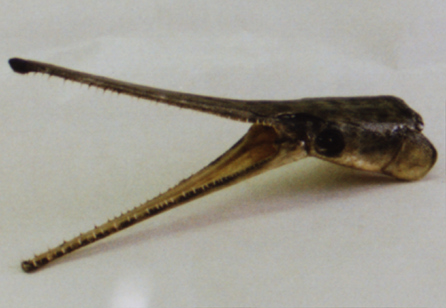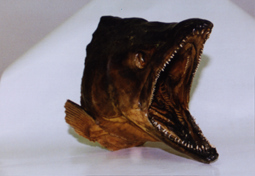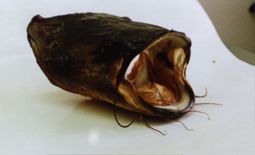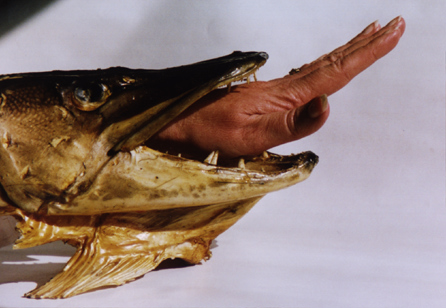Fish Heads
A Lesson on Adaptation
Concepts:
- A habitat is the place where an organism normally lives.
- The role an organism plays in the environment is its niche.
- Organisms develop features which best suit their environment. This is
called adaptation.
Principles:
- Organisms change over generations.
- Organisms with features that help them to live in their environment
are most likely to be successful.
Skills
- Observation
- Hypothesis formation
- Research
- Oral Presentation
Materials
- Fish head handout or dried fish
heads
- Pencil
Procedures and Activity
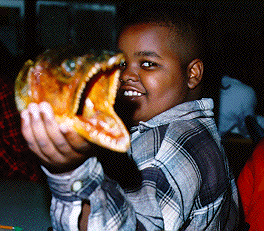
Introduction
- Ask how many children have pets. How many have dogs? Ask what breeds
their dogs are. How are breeds different and how are they the same? Discuss
how animals such as dogs can be similar but have features that make them
different. Talk about small dogs that are adapted to chasing game down
holes, or webbed-toe breeds adapted to water rescue. Then ask the question,
"Why are animals different?"
- Today, we are going to look at different types of fish heads and discuss
why they are different and how they came to be this way.
Activity
- Give students handout. Review the
vocabulary terms habitat, niche and adaptation. Ask: what is in an aquatic
environment? How might these environmental factors vary from one lake to
another. Are they different in lakes and rivers? What about in the ocean?
- Have students examine pictures of fish heads on handout or actual fish
heads.
- Ask the question, "How are these fish heads different?" What features do
they have which vary and which are the same? Look at the shapes of their
heads, the size and shape of their mouths and teeth, and the location
of their eyes.
- What might these similarities and differences tell you about where
the fish lives, what kind of food it eats, and where it is in the food
chain?
Closing - Original Question
Ask again, "Why aren't all fish alike?"
Evaluation
Let each student pick a fish head and describe its traits and share
what they think the traits tell about the fish and the kind of niche it
would be most successful in. Listen for evidence of understanding of the
terms niche, habitat, and adaptation.
Extension Ideas
- Ask students to discuss animals other than fish. What features do animals
such as giraffes, anteaters, kangaroos, and skunks have that are adaptive?
Can you think of some other animals that have special features that make
them especially well suited to their habitat? Birds are a wonderful
everyday example: are their feet adapted to perch on tree trunks or to run
on the beach or to swim? Are their beaks good for cracking nuts or for
getting insects out of tiny spaces or for sifting through water? Are their
wings adapted for the silent flight of a predator? Anyone with a backyard
birdfeeder could share some knowledge of what birds eat and how.
- Discuss how plants might adapt to an environment and ask if they can
think of any plants that have adaptive features.
- What would happen if the environment changed? How do you think animals
such as dinosaurs became extinct? Are animals becoming extinct today?
Research an endangered species and share your findings with the class. Find
out about the animal's habitat. Look for some features that make it well
suited for that environment. Tell the class why the animal is endangered.
Is there some connection between the animal's features, its habitat, and
the animal being endangered?
- Visit the University of Michigan's Museum of Zoology Division of Fishes
for more information about fish.
Careers Related to the Lesson Topic
- Biologist
- Ecologist
- Marine Biologist
- Natural Scientist
- Tour
- University of Michigan Exhibit Museum of Natural History
- Tour
- Gerald E. Eddy Discovery Center
- Park Ranger
- Zoologist
Prerequisite Vocabulary
- Habitat
- The place where an organism normally lives and grows
- Niche
- The role an organism plays in the environment
- Adaptation
- When an organism develops features which best suit its environment
Let us know what you think! E-mail our webmaster
Last amended 2 May 03
